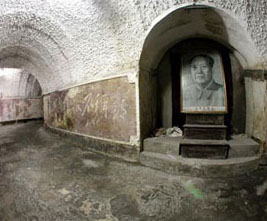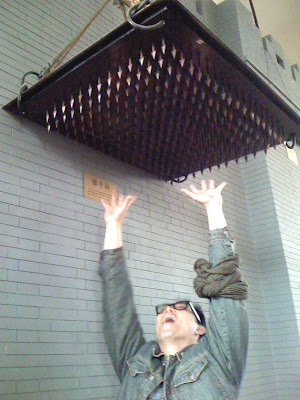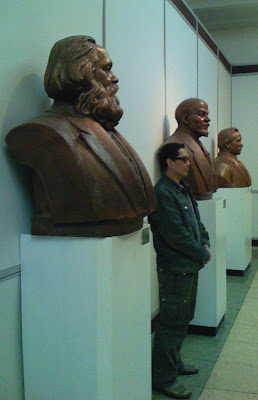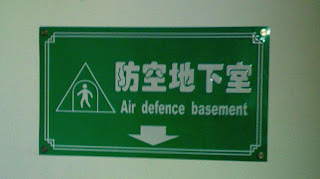Biyernes, Disyembre 21, 2007
Huwebes, Disyembre 6, 2007
...ship has sailed?
Sabado, Disyembre 1, 2007
New Zealand or Bust - update3

nbi request for clarification documents
Lunes, Nobyembre 19, 2007
they call it the "BIRD's NEST"
The main stadium for next year's Beijing Olympic Games, the $400 million "bird's nest", will open to the public for the first time in April 2008.
The structure itself is composed of a grid-like formation that serves as both structure and facade, integrating the stairs, walls, and roof into one cohesive system. Instead of form being dictated by function, Herzog and DeMeuron’s design effectively removes the distinction, making function and form one in the same.
Such a large-scale and highly-trafficked building raises questions of waste, efficiency, and cost, but the “Bird’s Nest” seems to pose innovative, green solutions to a variety of potential building issues. Its green features include a rainwater collection system, a translucent roof that provides essential sunlight for the grass below, and a natural, passive ventilation system.
Perhaps the most unique feature of the structure is its “cushion” system which strategically fills the spaces within the building’s facade to regulate wind, weather, and sunlight. On the rooftop, the inflatable cushions fill gaps to weather- and waterproof the stadium. “Just as birds stuff the spaces between the woven twigs of their nests with a soft filler, the spaces in the structure of the stadium will be filled with inflated cushions.” Coincidentally, the cushions will be made from ETFE, the same material used to create the translucency of the “bubble building” across the Olympic park.
Sculptural rather than an architectural sensory overload like many a contemporary stadium, “it meets all the functional and technical requirements of an Olympic National Stadium, but without communicating the insistent sameness of technocratic architecture dominated by large spans and digital screens.”
___________________________________
anton santos pics
Sabado, Nobyembre 17, 2007
New Zealand or Bust - update2
Huwebes, Nobyembre 8, 2007
one moment in time...
 a scene from "enemy at the gates"?
a scene from "enemy at the gates"? moonlighting as a scout for the great genghis khan.
moonlighting as a scout for the great genghis khan. ...handing the chairman a scarf.
...handing the chairman a scarf.Miyerkules, Nobyembre 7, 2007
missiles of november
parked outside the military museum in beijing is this obsolete IRBM (intermediate range ballistic missile), the DF-2 was part of the Dong Feng/Julang missile series.
Martes, Nobyembre 6, 2007
Linggo, Nobyembre 4, 2007
New Zealand or Bust - update!
...where was i this week?
went back to the clinic for my GGT check up last monday, guess what? - my darn GGT jumped from 77 up to 155. inspite of all the precautions i took - no coke for 2 weeks with balance diet and water therapy. anak ng tipaklong! buti pa nung regular coke drinker ako at kahit ano ang kinakain mas mababa pa yung GGT ko.
alarm bells started ringing - oh no! this is it, my bubble burst.
started to feel like this chap (reminds me of "who framed roger rabbit"movie).
- or did it? doc told me if i failed that theres another test to take thats all ( i saw on her list a series of test to take after each failure). Hepa C test - no problimo! passed it with flying colors.
tuesday morning i finally submitted my papers (including med result) sa NZ emb in beijing, now on to the visa waiting game for the next two weeks.
Biyernes, Oktubre 19, 2007
Huwebes, Oktubre 18, 2007
THEY built this city.
on our way to a meeting this morning (here) passby these...
northwest
(under construction)
(artist rendering)
Undoubtedly China’s most spectacular new building project to date, costing a whopping $750 million. Designed by Rem Koolhass of the Office for Metropolitan Architecture (OMA), the 230-meter tall twin-tower is connected on both the ground and at the top as a twisted loop. The irregular grid on the building surface is supposed to represent the forces traveling throughout the structure.
west(under construction)

(artist rendering)
Skidmore, Owings & Merrill
The China World Trade Center (CWTC) development in Beijing is a large long-term project in the heart of Beijing’s Central Business District (CBD).
For Phase Three, a new tower is being erected that will become the tallest building in Beijing at 330m. It will feature office accommodation, a five-star hotel at the top of the building, as well as retail and entertainment venues.
southwest
Beijing TV Center(silhouette at left)

(artist rendering)
The Beijing TV Center is a building that is 258 meter high with 41 floors above the ground. This project marks a milestone for the japanese architectural firm Nikken Sekkei Ltd.
north
(Sofitel towers at left)
(me as foreground asungot)
"..architecturally speaking, since a number of new designs are unlike anything ever seen in China, or anywhere else for that matter. Suddenly the focus of many of the world's great architects, Beijing in the run up to the Olympics, is like a blank canvas. Some wonder, though, if all the lavish new strokes are too expensive, and eccentric."
Tell of the Tape
Miyerkules, Oktubre 17, 2007
back to the stone age
i've heard of beijing's underground city but i cant find the entrance, hopefully the address i got from this time mag article can help me pinpoint it.

Getting There
The Underground City entrance is on Xidamochang Jie. Proceed east on the first alley south of Qianmen about 400 meters and you should see the sign, in English and Chinese, in the south (right) side of the road. Cameras are allowed, and it's a good idea to bringing a flashlight to peer down unlit corridors.
Tel: 6702-2657, 6701-1389
Hours: Daily 8am to 6pm
Admission: RMB20 [$2.50]
para sa mga tumador...

i shun alcoholic beverages but dito sa lugar ng mga intsik ay di maiiwasang matagayan ng client. ang alak kasi dito ay panulak sa pagkain - tanghalian man o hapunan, minsan pati sa agahan lalo na kung winter.
eto ang pamatay nila dito ang "Maotai"
palagay ko mag-eenjoy si tata nats dito.
The Maotai is volatile stuff - over half of its contents is alcohol. Here are 10 things you should know about China's national wine
1. Maotai is a type of Chinese wine made exclusively in Maotai city in the northern province of Guizhou.
2. It has a mind-blowing 53 per cent alcohol content, compared to vodka's 40 per cent. It has been portrayed in Chinese movies as the drink to take to prove your manly valour and as a sabotage tool on grooms on their wedding night.
3. First made around 135BC in the Han dynasty, it was adopted by Emperor Hanwu as the imperial wine. Today, it is served to visiting dignitaries in Beijing, and carried in Chinese embassies around the world.
4. Unlike Western wines, which are made from fruits, Chinese wines are made from grains. Chinese wines from southern China are mostly made of rice, while those from northern China are mostly made of wheat and sorghum.
5. At least five years go into the making of Maotai, with one year in production and four in fermentation. There are also special 15-, 30-, 50- and 80-year vintages.
6. Maotai is now made by Kweichow Moutai Distillery Group, one of the largest state-owned enterprises in China. It produces 10,000 tonnes a year, of which more than 95 per cent is consumed in China.
7. It cannot be made anywhere outside of Maotai city as it requires very specific environmental and climatic conditions. Its company chairman, Yuan Renguo, says it's easier to make an atomic bomb than Maotai. 'You can make an atomic bomb anywhere, but you can only make Maotai in Maotai,' he says.
8. Priced at 367 yuan (S$77) a bottle in China, it remains the drink of choice among the wealthy elite, the business set and politicians.
9. It is known to be good for health, particularly for the liver and stomach. The late Premier Zhou Enlai reportedly never took conventional medicine. He just tossed back a shot of Maotai when needed.
10. Since 2000, the distillery has introduced red and white wines, made from grapes. It is the first company in China to make Western grape wines.



























